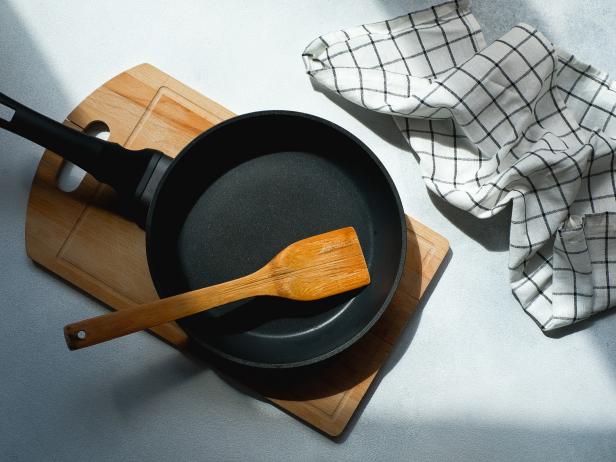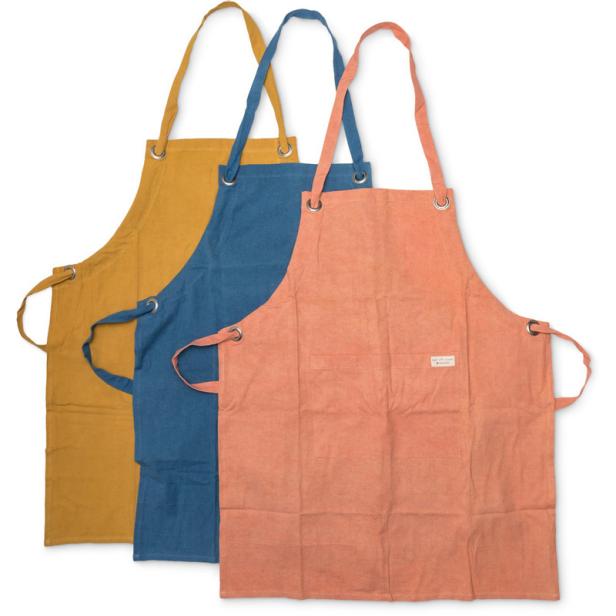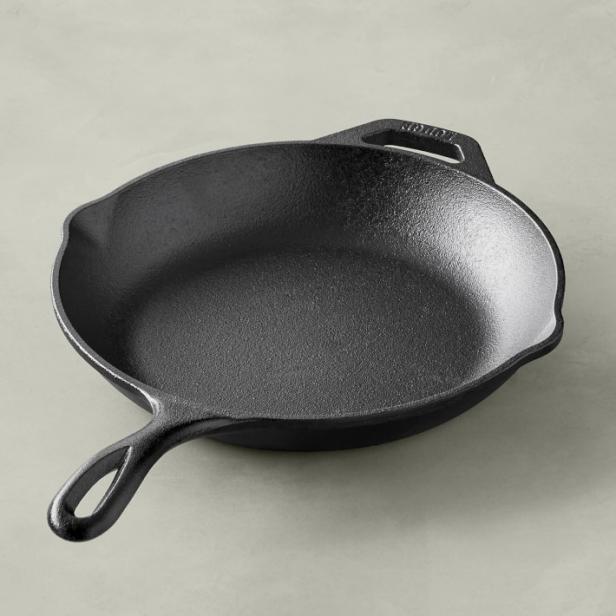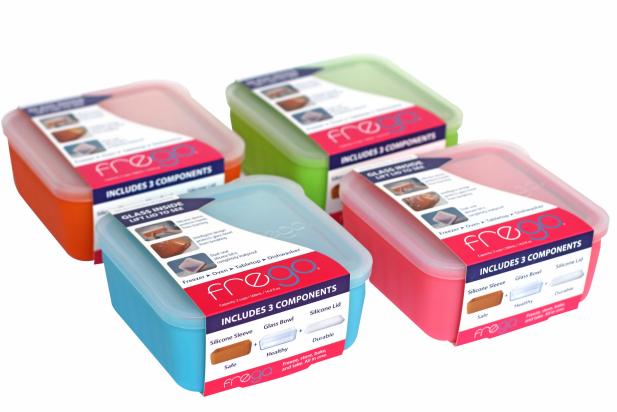What Should You Look for In a Sustainable Brand?
Plus, five sustainable kitchen brands we love.

Aleksandr Zubkov/Getty
Sustainability is a hot topic, and for good reason. Broadly, it’s about building things — businesses, products, lifestyles, systems and more — in a way that protects the environment and ecosystem and doesn’t deplete natural resources for future generations, while also supporting human health and overall wellbeing in the present. But more concretely, it can be tough to decipher what exactly makes something sustainable (or not).
Companies understand that sustainability is increasingly important to consumers, and they go out of their way to highlight some of their certain sustainable practices. But oftentimes, this marketing doesn’t tell the whole story. Maybe said practices aren’t as sustainable as they seem, or maybe the brand is also engaging in some decidedly unsustainable practices that don’t make it into their marketing materials.
When it comes to kitchenware, consumers also need to think about how a product will boost their own efforts at sustainability. For example, if you’ll only use it a few times before forgetting about it, the product isn’t really worth the materials, labor and transportation costs that went into it. Or, if a product is made from sustainable materials but the company doesn’t pay a living wage, it’s not sustainable for the workers who made it.
Perfection doesn’t have to be the goal here; sustainability is complex, and it’s more realistic to focus on reducing your kitchen’s environmental footprint than to obsess over becoming a totally zero-waste household. Below are some things to look for in sustainable brands and their products.
Opt for natural and recycled (or recyclable) materials.
A basic tenet of sustainability is using materials that can be recycled or are biodegradable, both of which cut back on landfill waste. There are lots of cookware options made from sustainable materials, including cast-iron, stainless steel, aluminum, copper and ceramic. On the other hand, Teflon-coated pans are made with fluorinated plastic, which isn’t recyclable and can be toxic to both humans and the environment.
Fabric items, like aprons and placemats, should also be made with sustainable materials. “The fabrics to look out for are natural, organic, and recycled,” says Seema Sanghavi, founder of Cooks Who Feed, a company that sells aprons and uses some of the proceeds to rescue surplus food and provide nutritious meals. “Try to avoid anything that uses man-made fabrics, such as polyester, as they require harmful chemicals, including carcinogens, for their production. These types of fabrics also do not biodegrade like natural fibers.” Instead of polyester or microfiber, opt for fabrics like organic cotton, bamboo, linen, silk and wool.
Take durability into account.
If something is made from a sustainable material but doesn’t last long, it may not be worth the cost of the labor, material, transportation and energy that went into producing and selling it. When it comes to cookware, cast-iron gets high marks from sustainability experts. “We typically recommend cast-iron in our research-based cookware reviews as it can last a lifetime if properly taken care of, and doesn't require a non-stick coating that can contain toxic chemicals,” says Calloway Cook, President of Illuminate Labs, a supplement company that’s also a certified Benefit Corporation, or B Corp (more on that in a minute).
Of course, it can be tough to figure out how long something will last before you even buy it. Try asking around or reading credible reviews to determine how long a product will likely last with regular use.
Look for a B Corp or another third-party certification.
Unlike with food products, for which the United States Department of Agriculture (USDA) runs the Organic Certification Program, there’s no official government-run certification that denotes household products as sustainable or not. That said, there are some third-party certifications that ensure a brand meets certain sustainability standards. “Reputable third-party certifications are an excellent way to choose sustainable brands because they indicate that a product has met certain environmental or social standards,” says Jennifer Kaplan, Food Systems Sustainability Manager at Miyoko’s Creamery and a former instructor of sustainable food systems at the Culinary Institute of America.
Although there’s some skepticism among consumers about how well these sustainability standards are enforced, there’s no doubt that the certifications push businesses to be more sustainable and transparent in their practices. “One of the best and easiest to find certification is Benefit Company (B Corp),” Kaplan says. “B Corps companies have committed to using business as a force for good, and to undergo a rigorous assessment of their governance, workers (which accounts for labor and equity issues), community, and environmental impacts.” You can find an online directory of B Corps here. Kaplan also recommends 1% For the Planet, a certification denoting that a company contributes at least one percent of its annual sales to environmental causes.
One important note is that getting these certifications can be expensive and time consuming, so smaller or newer brands may opt to not apply for them, even if their practices are sustainable.
Avoid products in single-use plastic packaging.
If sustainability is the goal, it’s not just the product itself that counts, it’s also the product’s packaging materials. According to the World Wildlife Federation (WWF), roughly 40 percent of plastics created are single-use, used for product packaging, food packaging, plastic bags, plastic wrap and more.
“Cardboard is the best sustainable shipping material as it's effective, cheap and non-toxic,” Cook says, adding that glass and paper are also sustainable, and that recyclable plastic is a far better option than single-use plastic.
In this same vein, products that replace traditionally single-use items — like cloth towels in place of paper towels, beeswax wrap instead of plastic wrap and even silicone airtight bags (which aren’t natural but are recyclable) instead of plastic zip-top bags — are great, sustainable choices.
Pay attention to a brand’s labor practices.
Sustainability doesn’t just mean reducing carbon footprint; it’s also about paying workers a living wage and providing safe working conditions. Different from minimum wage, which is a government-established standard, living wage uses the cost of living in an area to determine the wage needed to cover a household’s basic needs, including not just food and shelter, but also things like health insurance, childcare, transportation, clothing and personal care items. Some areas have living wage certification programs that you can look for in a brand’s marketing. You can also look to see whether a brand advertises its wages — brands that pay a living wage often do — and use that to guide your decision-making.
Demand transparency.
Again, sustainability is complicated, and no one is doing it perfectly. If a brand is calling itself sustainable, you as the consumer have the right to know what their practices are and why they’re claiming this (instead of just trusting them outright). Kaplan points out that too often, companies engage in “greenwashing,” which means they cleverly market themselves as more sustainable than they actually are, counting on the fact that consumers won’t actually dig into their claims.
Certifications like B Corp provide some transparency and accountability. Some companies take it a step further by documenting, on their website and elsewhere, where they source their materials from, how their products are made and by whom, and what other environmental efforts they’re engaged in.
Some of Our Favorite Sustainable Kitchen Brands
You’ve almost certainly seen the Always Pan on Instagram. Its nonstick coating is made with eco-friendly ceramic (not Teflon), it’s free of potentially toxic substances and its various pieces are made out of sustainable materials like stainless steel, aluminum and wood. The packaging is also biodegradable and recyclable, a major plus for a direct-to-consumer brand. Our Place’s two offerings, the Always Pan and the Perfect Pot, are especially great for people who are just starting to build up their kitchenware, as they’re designed to multitask and cut down on the number of pots and pans you actually need (also very sustainable). To top it off, they pay workers at least a living wage and conduct regular audits of their factories to ensure good working conditions.
Earth Hero isn’t a kitchen brand, per se. Rather, it’s a curated online marketplace of sustainable home goods, including kitchen items. A certified B Corp, Earth Hero is a great place to shop for gifts, kitchen basics or tabletop decor. You’ll find a variety of items, from cast-iron skillets to spatulas to aprons. It’s easy to shop by brand or category, but there’s also a really cool option to "Shop By Values," which means sorting products based on filters like women-owned, plastic-free, zero-waste packaging, Black-owned and safe and fair labor.
You may already have a Lodge cast-iron skillet, griddle or pot in your kitchen. That’s something to feel good about. Lodge’s cookware has been made in the USA since 1896, comes in recycled and biodegradable packaging, and is made from cast iron, a completely recyclable material. (Never throw a cast iron skillet away — you can recycle it at a scrap metal recycling site, and it’ll be melted down and turned into something new.) Lodge is transparent about its own eco initiatives, like reducing energy consumption by 10% between 2011 and 2012, and its recycling program.
Before we get into why we love Amoretti Brothers from a sustainability standpoint, we need to point out that the company’s cookware is absolutely stunning. It’s made from recycled copper and cast-bronze, which adds a vintage look to your kitchen while being great for the environment. The products are made in Mexico by a work staff that’s 50 percent female and paid a fair wage.
When it comes to airtight storage containers, plastic is everywhere. Even many popular glass containers feature plastic lids for proper closure. That’s why we love Frego, a brand that makes glass storage containers with silicone lids. Yes, silicone is synthetic, so no, it’s not biodegradable. But it’s recyclable and lasts far longer than plastic, which makes it by far the more sustainable choice.
Related Content:
























.jpg.rend.hgtvcom.616.493.suffix/1619724332826.jpeg)











































